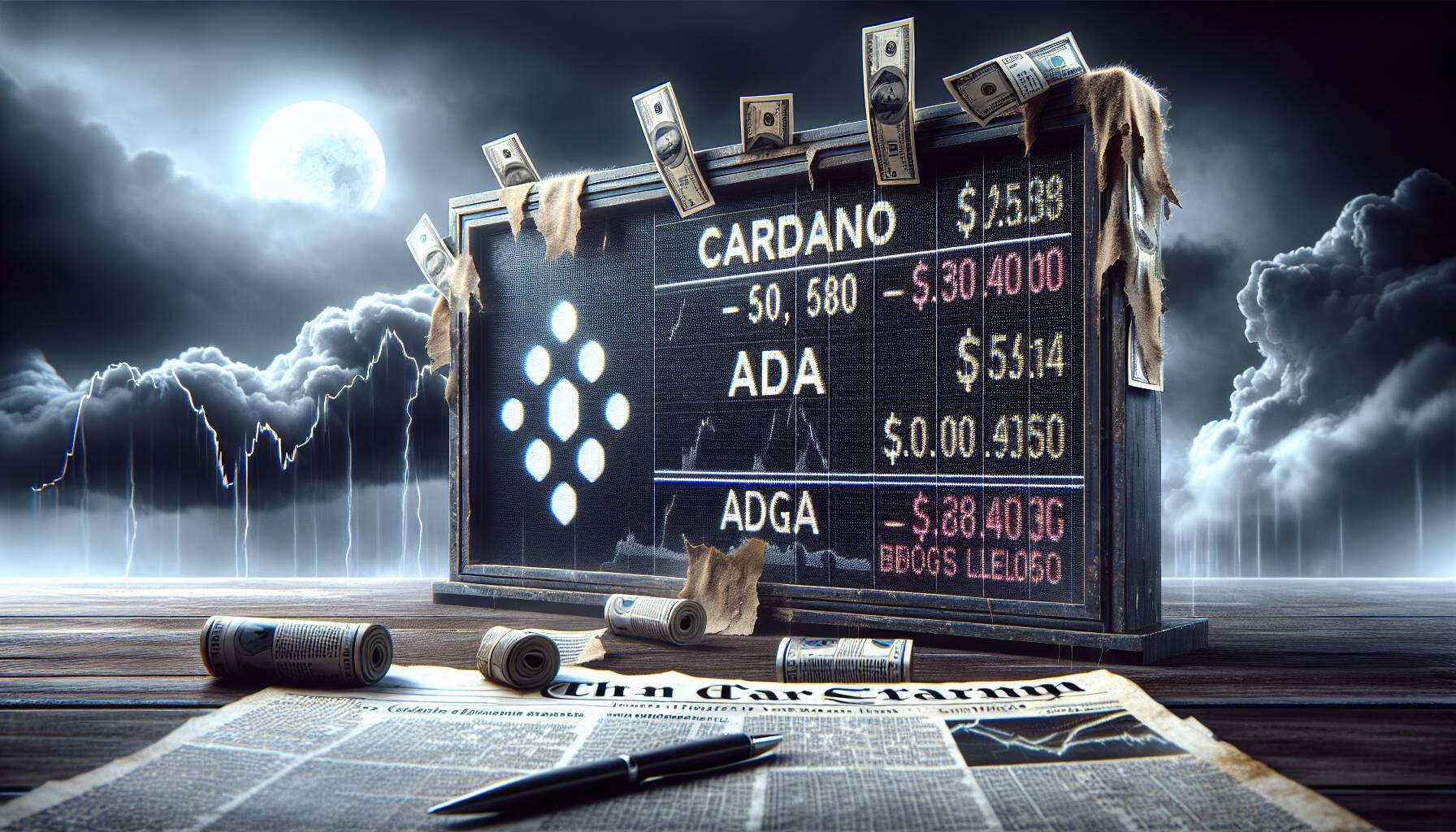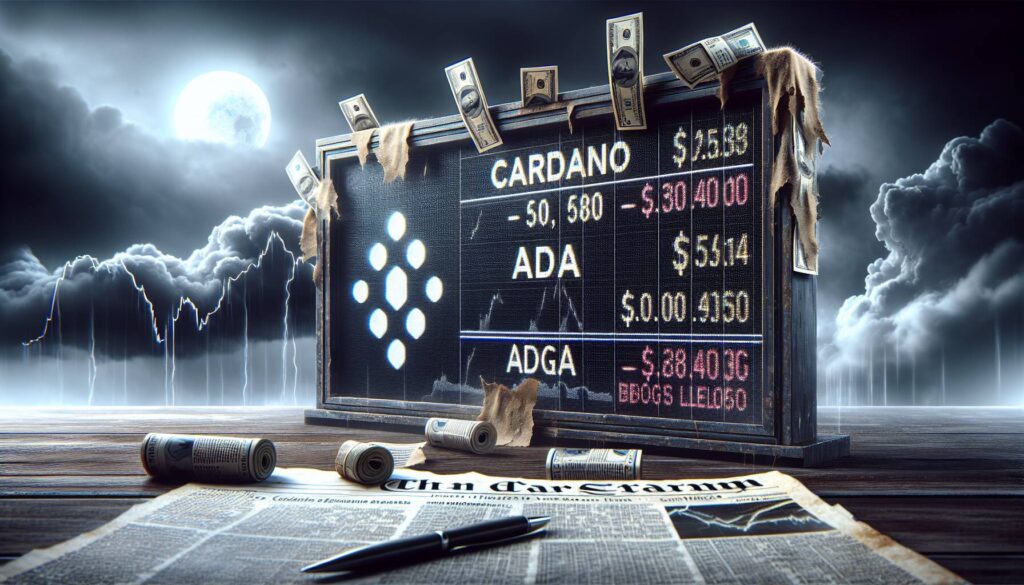Cardano’s ADA token finds itself navigating challenging waters as it slips to $0.5965, struggling to maintain its footing near the critical $0.60 psychological threshold. According to analysis from CoinDesk Research, despite early indications of a possible bullish reversal, marked by a potential triple bottom pattern, the recent price movements reveal ongoing vulnerabilities in the market. The lack of resilience at the $0.60 mark underscores a precarious situation for investors.
What catches the eye, however, is the notable increase in trading activity, with 24-hour trading volume swelling by 30% beyond its 7-day average. This spike indicates heightened market engagement, although the sentiment remains cautious in the short term. Additionally, a decline in net flows to exchanges suggests that ADA holders might be opting to store their assets long-term rather than frequently trading them.
“ADA traded in a narrow range between $0.589 and $0.612 over the last 24 hours, with a closing price of $0.5965, signaling a break below the crucial $0.60 mark without a immediate recovery.”
As Cardano boasts over 2,000 decentralized applications and 10.8 million native tokens on its network, some traders are speculating on a potential rebound if the broader cryptocurrency market begins to stabilize. Yet, current market conditions show a disrupted uptrend and weakened bullish momentum, leaving many to ponder the future direction of ADA amidst fluctuating trading dynamics.

Cardano’s ADA Token Market Analysis
Key points regarding the current market conditions of Cardano’s ADA token and their potential implications:
- Current Price Movement:
- ADA token is priced at $0.5965, struggling to maintain upward momentum.
- Significant psychological support exists at the $0.60 threshold.
- Previous Bullish Indicators:
- Earlier price action hinted at a bullish reversal with a potential triple bottom formation.
- Continuous failure to sustain above the $0.60 mark suggests persistent market weakness.
- Trading Volume Insights:
- 24-hour trading volume increased by 30% over the 7-day moving average, indicating heightened market interest.
- Despite bearish short-term price action, the rise in activity may signify a shift in trader sentiment towards accumulation.
- Market Dynamics:
- Reduction in exchange netflows suggests ADA holders are moving towards long-term storage strategies.
- Existence of over 2,000 decentralized applications and 10.8 million native tokens on the Cardano network may attract traders post-stabilization of market conditions.
- Technical Analysis Observations:
- ADA traded within a 3.9% range between $0.589 and $0.612 in the last 24 hours.
- Final hourly candle confirmed a break below $0.60 with no immediate recovery, further weakening bullish momentum.
Analyzing Cardano’s ADA Performance and Market Dynamics
Cardano’s ADA has recently faced notable challenges in maintaining its upward trajectory, slipping to around $0.5965. This decline is particularly concerning as it has failed to sustain the pivotal $0.60 psychological support level, which typically serves as a strong point for investors to rally around. The current market sentiment surrounding ADA reflects a bearish trend, contrasting sharply with the bullish reversal signals that emerged earlier, such as the potential for a triple bottom formation. This situation indicates a significant competitive disadvantage for Cardano amidst a fluctuating market landscape.
In comparison to other cryptocurrencies, such as Ethereum and Solana, which have managed to retain stronger momentum and stabilizing price levels even during market downturns, ADA appears to be struggling. The surge in 24-hour trading volume by 30% above its 7-day moving average signifies heightened market interest, yet this enthusiasm might not translate into lasting price increases given the prevailing bearish sentiment. While other projects may be benefiting from consistent investor confidence, Cardano is left grappling with the implications of its price action.
The increase in activity, coupled with reduced exchange net flows, suggests that ADA holders are opting for long-term storage strategies rather than short-term trading, which could either support a future price rebound or indicate a loss of faith among investors in the short run. This shift may benefit long-term investors who are willing to ride out the volatility, but it poses challenges for traders looking for immediate gains. Moreover, traders watching Cardano closely alongside the deployment of over 2,000 decentralized applications and 10.8 million native tokens might still see potential in a market rebound if macroeconomic conditions stabilize.
Ultimately, the dynamics surrounding Cardano’s ADA present a mixed bag; while the potential for recovery exists, a significant portion of the trading community may find themselves dealing with the ramifications of decreased volatility and waning market sentiment. This volatility could create opportunities for savvy investors but may also discourage new entrants who might perceive ADA’s market performance as unstable.

















